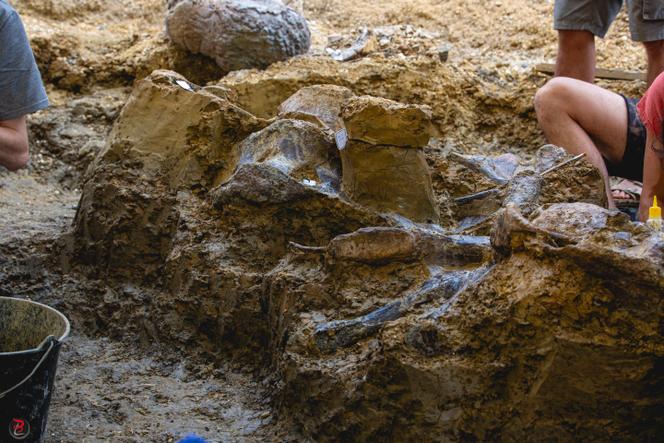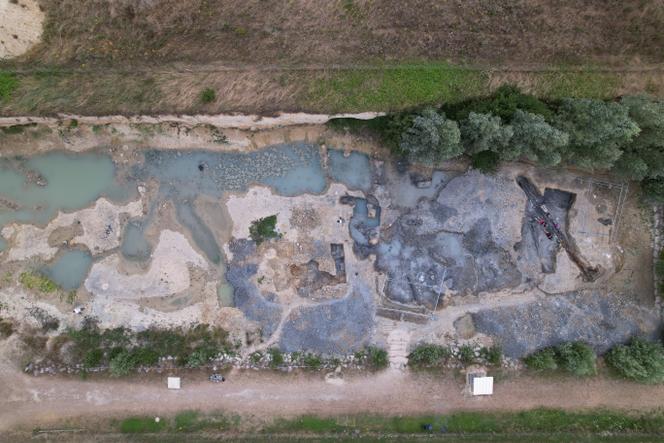


The Angeac fossil site in southwestern France continues to live up to its reputation. This summer, paleontologist Ronan Allain, from Paris' National Natural History Museum (MNHN), and the 30 or so excavators working at this 140-million-year-old site were once again delighted. In 2010, the discovery of a sauropod put it on the paleontological map. After thousands of fossil bones were uncovered, the team was once again thrilled by the discovery of an enormous femur. This huge piece was soon followed by four vertebrae, fragments of a skull, a pelvis and around 20 teeth. Together, they help create the profile of a new sauropod species.
These quadrupedal herbivorous dinosaurs were among the largest creatures to have ever walked the Earth. The newcomer, which must have been between 15 and 20 meters long, "isn't the biggest, but it was pretty massive, weighing around 25 tonnes," said Ronan Allain. "Its teeth are different from those of the other sauropod species, the turiasauria, already discovered at the site," said the researcher.
A key difference this time is that, unlike the usual Angeac fossils, which are heavily mixed and often damaged by post-mortem trampling, this time the vertebrae were found "still connected." This means more bones are likely to be discovered nearby: "Everyone's in the starting blocks for next year!" said the paleontologist.
However, the season had got off to a bad start. "Because of the heavy rains, we didn't know if we'd be able to excavate; the machinery was sinking, and we couldn’t drain the site," said the researcher. Indeed, the Angeac site is located in a flood-prone quarry, where a system of pumps and successive basins is used to control the water level. The rain eventually stopped, and with only a few days' delay, the quarry workers, who give the paleontologists access to their site were able to remove the gravel layer covering the clay where the fossils had accumulated.

We need to picture Angeac 140 million years ago as a vast marshy plain. Some animals may have been trapped there by a sudden rise in water, such as a group of about 70 ornithomimosaurs, both male and female – "small" bipedal carnivores measuring 5 meters long. "It's similar to what we see with buffalo in Africa, where herds always cross rivers at the same spots during migration and can sometimes be swept away in large numbers," said Allain.
The new sauropod may have simply "died a natural death," he said, before being swept away by a flood. The clay preserved the imprint of the depression created by its mass in the mud. Was it some carnivores' prey? This summer, a small round bone, a calcaneus that could have come from a predator's heel, was found on the site, along with hundreds of teeth, suggesting that the Angeac area was also roamed by large, allosaur-like hunters.
You have 11.41% of this article left to read. The rest is for subscribers only.
